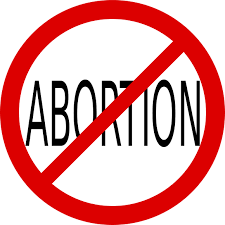By Atoyebi Nike
Unsafe abortion among young women is becoming a serious problem, especially in developing countries. Many girls between the ages of 15 and 25 face unwanted pregnancies and, with little access to safe and legal abortion services, turn to unsafe methods. This puts their health and future at great risk and creates long-term problems for society.
How Common Is It?
In Sub-Saharan Africa, young women account for over 40% of unsafe abortions. In cities like Lagos or Kinshasa, about one in four young women in poor communities have an abortion each year. In Nigeria, studies show that abortion rates among young girls are increasing again after dropping earlier in the 2000s. In Ethiopia, where abortion laws were relaxed in 2005, many abortions still happen in unsafe conditions.
Health Risks
Unsafe abortions can lead to serious health problems. Young girls are more likely to experience complications such as heavy bleeding, infections, injuries to their reproductive organs, and even death. In countries like Kenya and Ghana, unsafe abortions cause up to one-third of all maternal deaths. Many of these deaths are preventable with proper medical care.
Emotional and Social Effects
The emotional impact of abortion on young girls is often ignored. Many suffer from depression, guilt, and anxiety. Because of stigma, they may not tell anyone or get the support they need. In conservative communities, girls fear judgment from their families and society, so they hide what happened and suffer in silence.
Effect on Education and the Economy
Unsafe abortion can disrupt a girl’s education. Some drop out of school due to pregnancy or health complications from unsafe abortions. This limits their chances of finishing school, getting jobs, and contributing to the economy. Countries also lose future professionals, business owners, and leaders.
Treating complications from unsafe abortions is also expensive for governments. The cost is often more than what would be spent providing safe, legal services in the first place.
What Needs to Be Done
To reduce unsafe abortions and protect young women, several steps are needed:
-
Sex Education:
Teach young people about reproductive health, consent, and how to prevent unwanted pregnancies. -
Access to Contraceptives:
Make birth control easy to get, especially for young people in rural or low-income areas. -
Safe Abortion Services:
Where legal, ensure abortions are safe, affordable, and stigma-free. Where illegal, governments should consider changing harmful laws. -
Counseling and Support:
Girls need mental health support before and after abortions, including confidential counseling. -
Community Awareness:
Families, schools, and religious leaders must help reduce the stigma around reproductive health so young people can seek help without fear.
Conclusion
Unsafe abortion among young women is not just a health issue—it is a national concern. It affects girls’ education, weakens the workforce, and drains public health budgets. But this crisis can be solved. With the right education, access to healthcare, and support systems in place, young women can live healthier, safer lives and reach their full potential.


